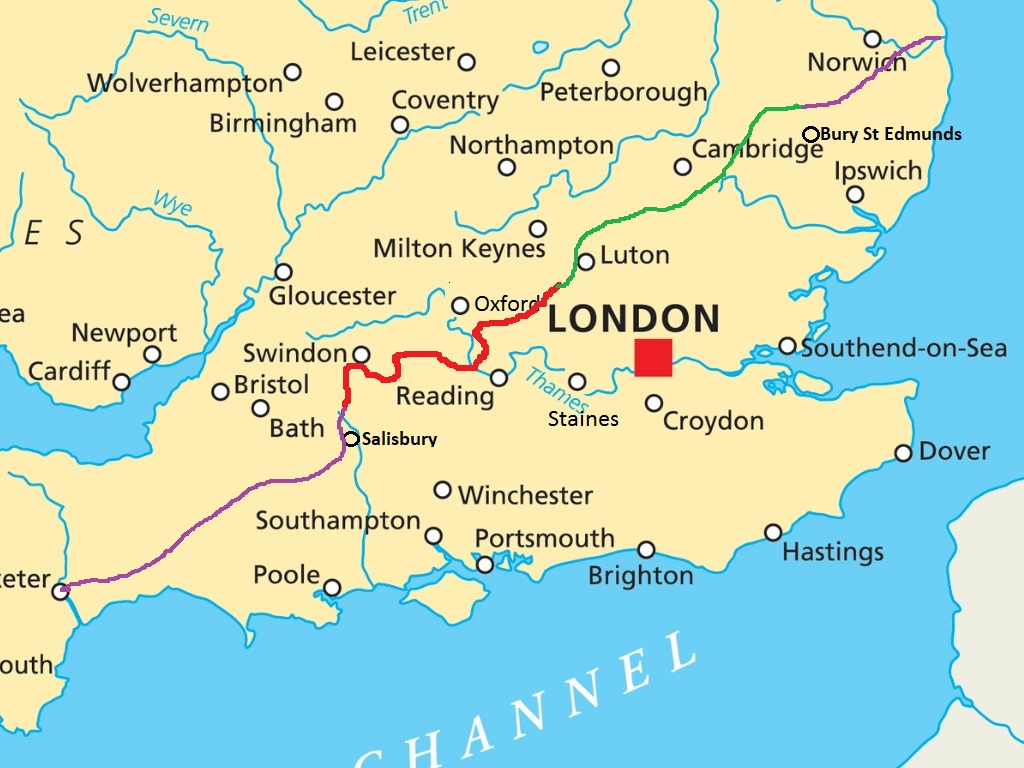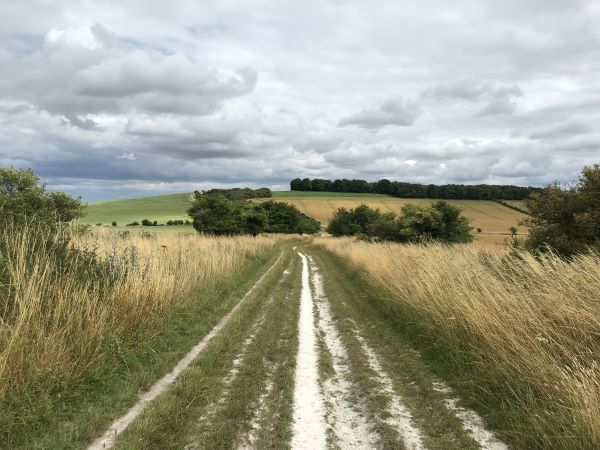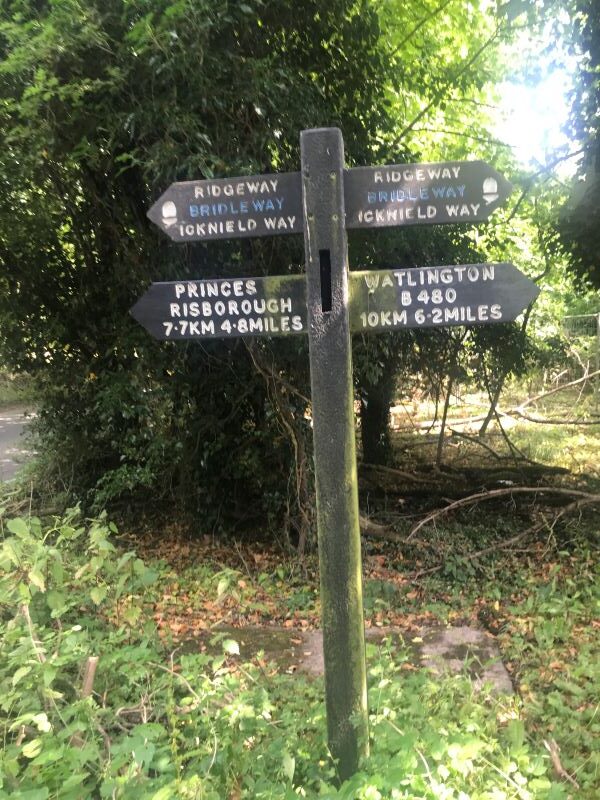There is quite some confusion regarding The Ridgeway’s claim to be England’s Oldest Road. The truth is that The Ridgeway forms part of England’s Oldest Road: the Icknield Way, which ran from Wiltshire to Norfolk. Its precise start and finish is undefined. Some believe it starts in Salisbury; others much further west in Exeter. In the east, the path might stretch to Icklingham, Yarmouth or Hunstanton.

The Icknield Way is one of England’s few pre-Roman roads, dating back to the Iron Age. By Roman times, it was recognised as one of the four highways of England, the others being Ermine Street, Fosse Way and Watling Street. Ermine Street ran north from London to Lincoln. The Fosse Way ran from Exeter to Lincoln, passing through Cirencester. Watling Street ran from Dover, through London, to Viroconium near Shrewsbury.
A logical question then arises: what was it for? There’s little doubt that it must have been a trading route – driving livestock to market. The high ground avoids the need to cross rivers and provides a degree of safety with less opportunity for ambush. But why would drive sheep for 200 miles?
In all probability the road would rarely have been travelled from end to end. Instead it must surely have been a series of connecting routes.
Certainly for long stretches of The Ridgeway National Trail, particularly the western section before Going and then again between Lewknor and Chinnor, the Path is wide and firm enough for herds of sheep to be driven. But, equally, in the eastern sections where the Path rises steeply onto the top of the Chilterns and then back down again, you would be right to wonder whether this is the actual path. And you would be right to question it as, quite possibly, the original route has been taken over by roads and the National Trail is now following an alternative set of paths.

For the Ridgeway walker, the Icknield Way can be confusing. Because there is, in fact, an Icknield Way Path. And, not only that, the Icknield Way Trail, the latter making use of bridleways and therefore designed for bikes and horses. The Icknield Way Path starts at Ivinghoe Beacon, the end of The Ridgeway, and runs as far as Thetford in Norfolk, north of Bury St Edmunds. The Icknield Way Trail starts in Chinnor and therefore overlaps the Ridgeway which can be confusing to Ridgeway walkers.
